|
John Tyman's Cultures in Context Series NEPAL |
|
|
|
664 - 685 |
|
John Tyman's Cultures in Context Series NEPAL |
|
|
|
664 - 685 |
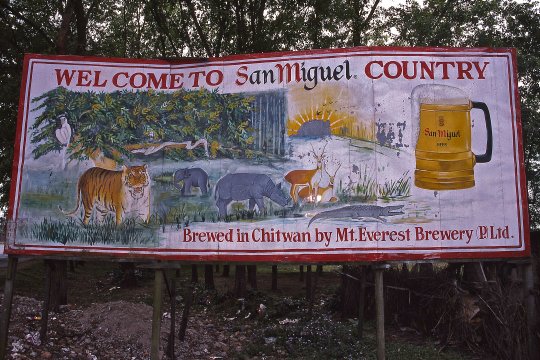 |
| 667. The largest factories are comparable in size to those overseas. This one is operated by a company from the Philippines (San Miguel) and there are other international manufacturers here. |
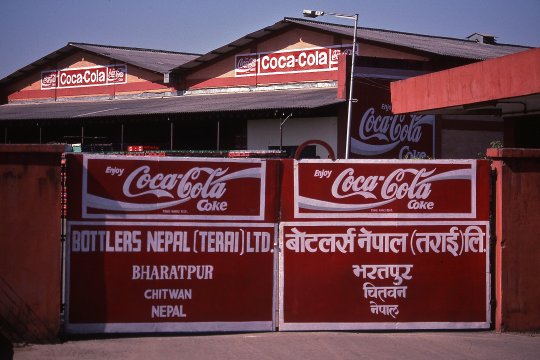 |
| 668. Coca Cola, inevitably, has a bottling plant! |
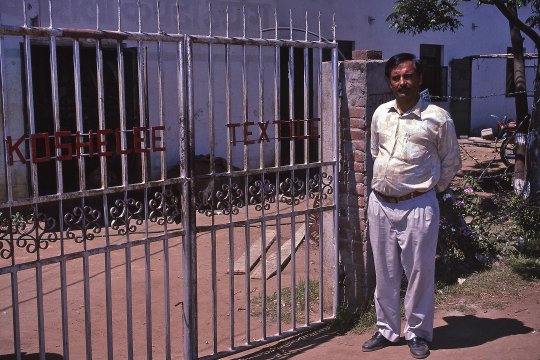 |
| 669. Local entrepreneurs have also profited from the Teraiís good fortune, and Gopal's uncle owns a small textile mill here. |
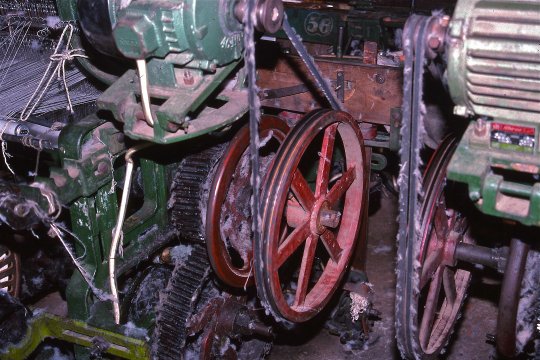 |
| 670. Its machines are powered by Nepalese hydro-electric energy. |
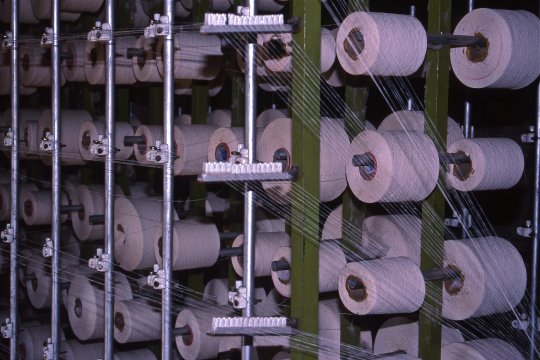 |
| 671. And they process local cotton, some of it from India. |
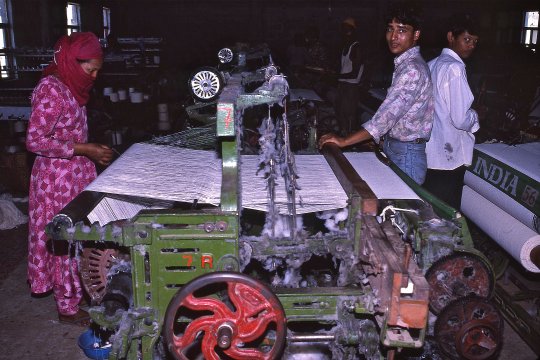 |
| 672. They make face cloths and towels, and exports these to America. |
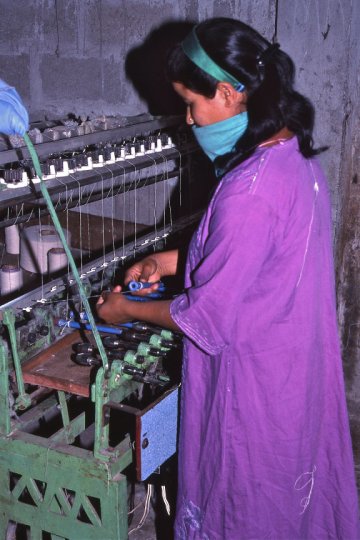 |
| 673. In common with cotton mills elsewhere, the air is thick with fragments of flock and those who operate the machines are encouraged to wear masks. [Video Extract 25] |
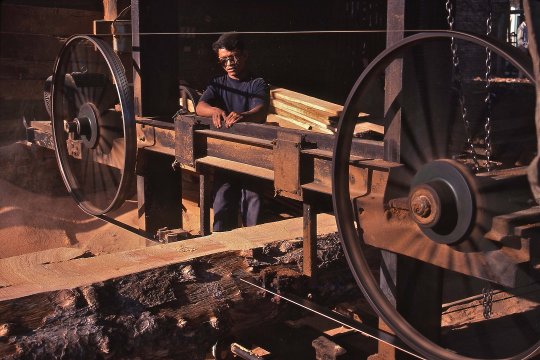 |
| 674. The saw mills in Bharatpur also depend on electricity. [Video Extract 25] |
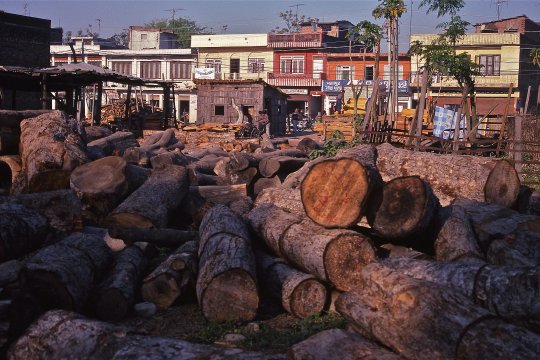 |
| 675. The logs are hauled in by truck -- over increasing distances as the forests of the region are progressively destroyed. |
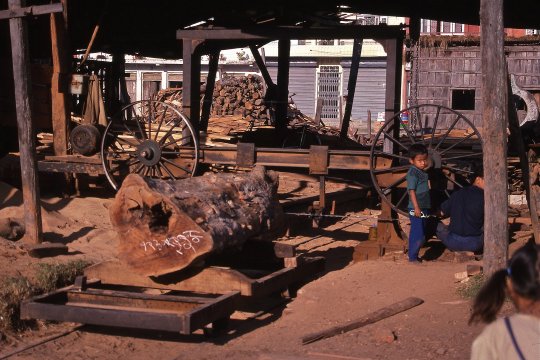 |
| 676. The logs are drawn on a trolley through the saw by a hand-powered winch and there are odd jobs even children can do. |
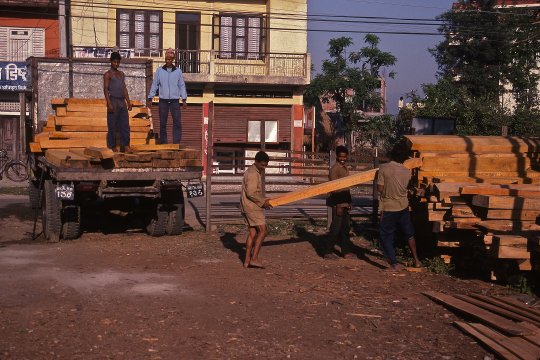 |
| 677. The finished lumber is used for furniture making and building construction: but destruction of forests remains a sensitive environmental issue. |
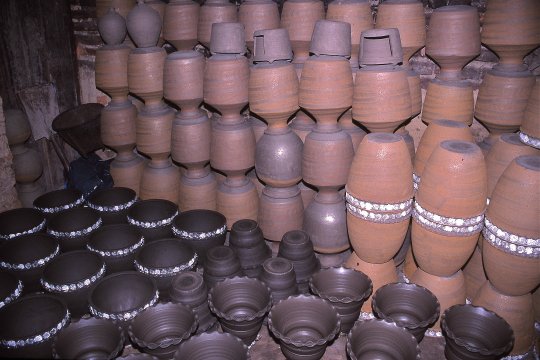 |
| 679. He is very productive, though, and his drying room was stacked with pots. |
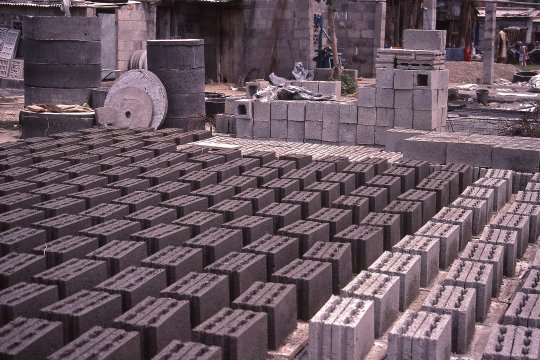 |
| 680. Similarly, much of Nepal's industrial production actually comes from small workshops -- producing concrete building blocks, for example, plus slabs and pipes for gutters and drains. |
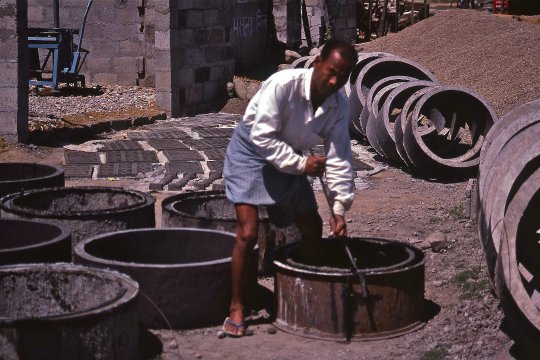 |
| 681. Well casings like these are produced simply by pouring concrete into a steel mould and leaving it to dry. |
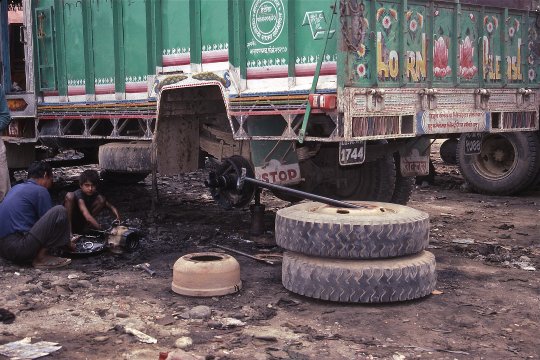 |
| 682. There were also a lot of workshops servicing the different types of vehicle used here, some of them employing quite young children. [Video Extract 25] |
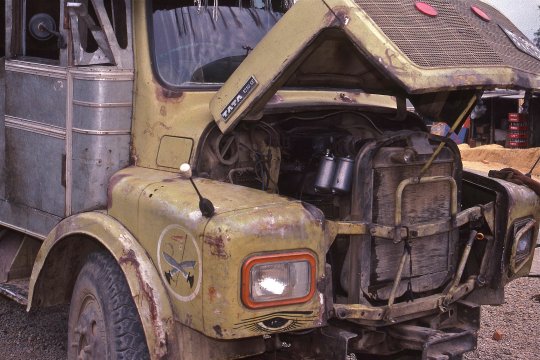 |
| 683. Given the advanced age of most trucks and buses in Nepal, the maintenance shops in Bharatpur were usually busy. Tata is an Indian company. |
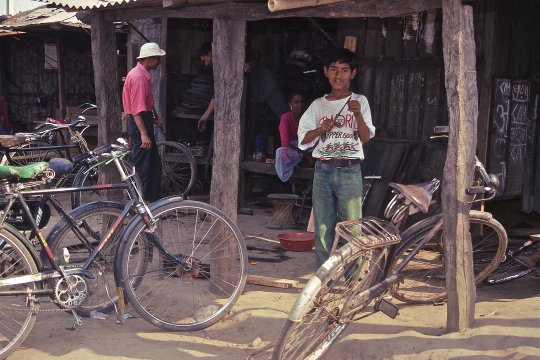 |
| 684. And since the thousands of bicycles that are rented out here are often the cheapest models available, they also need frequent repairs. |
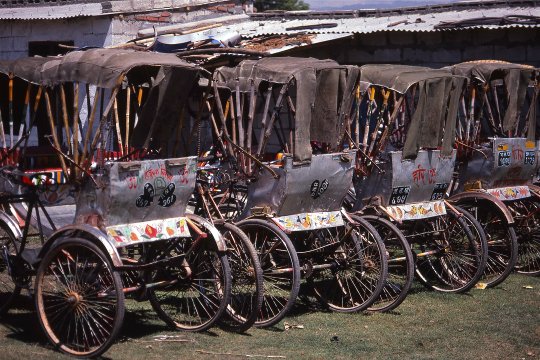 |
| 685. So, too, do rickshaws, which use much the same technology. |

![]()
Text, photos and recordings
by John Tyman
Intended for Educational Use
Only.
Contact Dr. John Tyman at johntyman2@gmail.com
for more information regarding
licensing.
![]()
www.hillmanweb.com
Photo processing, Web page layout,
formatting and hosting by
William
Hillman ~ Brandon, Manitoba ~ Canada